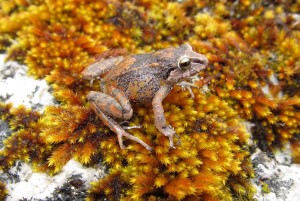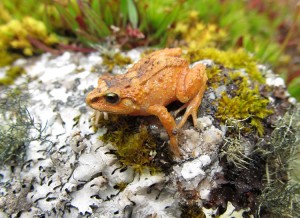Peru’s New Rubber Frogs
Friday, August 25th, 2017August 25, 2017
The Andes Mountains of Peru in South America have recently revealed some grape-sized secrets: three new species of so-called rubber frogs. An international team of researchers discovered the tiny amphibians while rooting through the Andean grass, rocks, and moss, and the scientists published their findings last month in the journal Zootaxa. The team, which consists of Edgar Lehr from Illinois Wesleyan University, Rudolph von May from the University of Michigan, and scientists from Peru and the Czech Republic, has been rather frog happy lately. The newly described animals—the Pui Pui rubber frog, Humboldt’s rubber frog, and the hill dweller rubber frog—are actually the third, fourth, and fifth new frog species discovered by the team this year. The species discovered earlier, which are also found in the Peruvian Andes, are Attenborough’s rubber frog and the Ashaninka rubber frog.

Humboldt’s rubber frog is found only at a single site high in the Andes Mountains of Peru. The frog is named for German naturalist and explorer Alexander von Humboldt. Credit: © Rudolf von May, University of Michigan
To make these discoveries, the scientists ventured to the hard-to-reach Pui Pui Protected Forest in Peru, a two-day hike from the nearest human settlement. The remote protected area, established in 1985, consists of alpine forests and grasslands. There have been few biological surveys conducted in the park since it was established, which leaves the possibility of more animal discoveries in the future.

The tiny hill dweller rubber frog lives among the bushes, mosses, trees, and feather grass of the Peruvian Andes. Credit: © Rudolf von May, University of Michigan
The three new species are land-breeding frogs, and they do not have a tadpole stage. The eggs laid by females develop directly into froglets. This mode of reproduction is successful as long as there is plenty of moisture.
Like all frogs, these new species are faced with threats from habitat loss and climate change, as well as Chytrid fungus, which can lead to chytridiomycosis, an infectious disease that has depleted amphibian populations around the world. The scientists took skin samples from the frogs, and several had the fungus—but that does not necessarily mean the frogs have the deadly disease. It is important to know that the fungus is there, however, so scientists can learn how these isolated frogs react to it.


